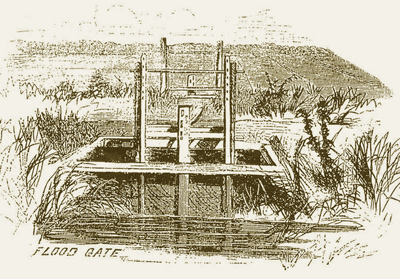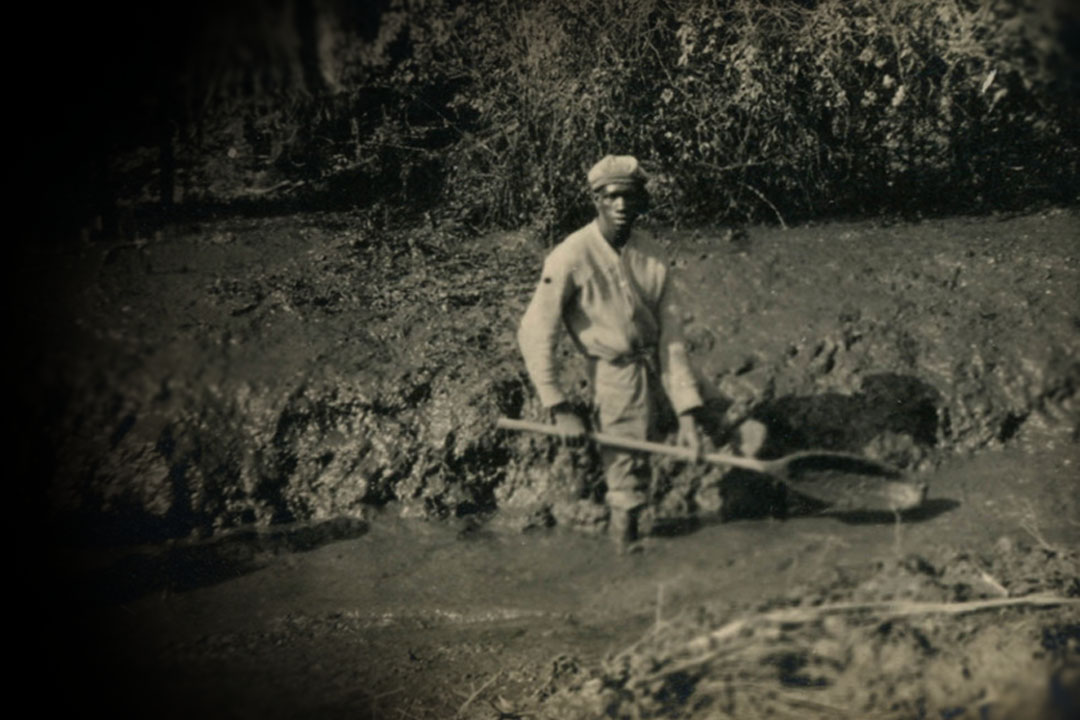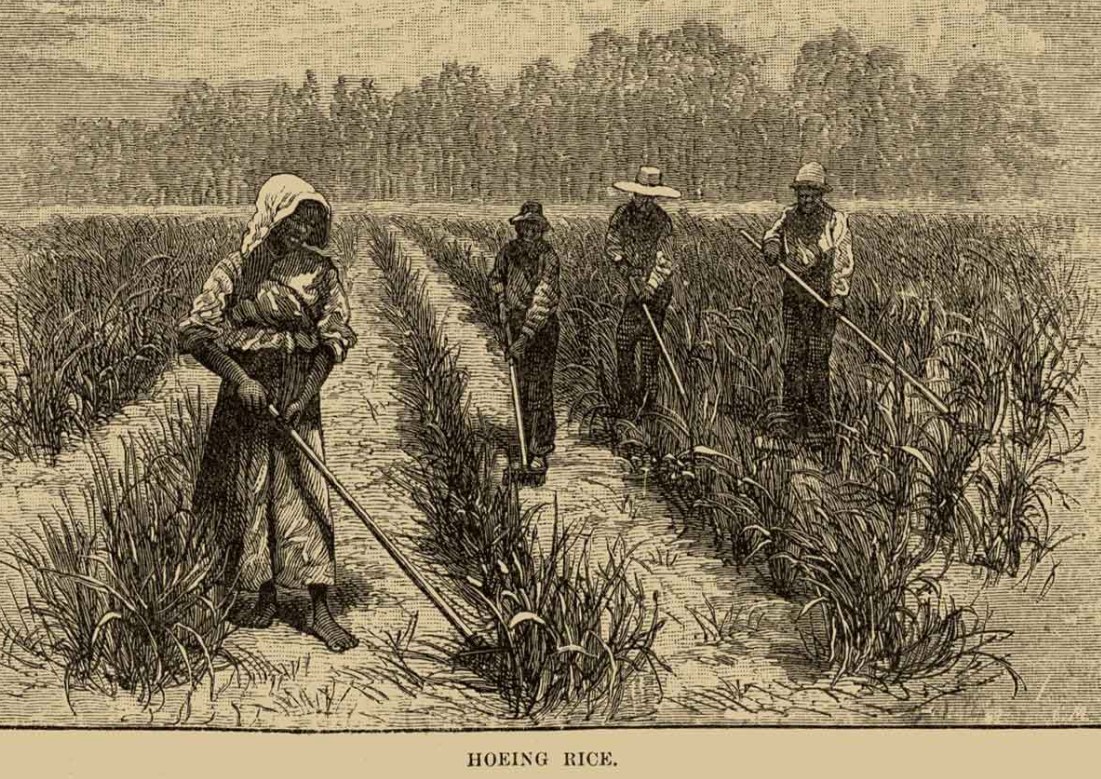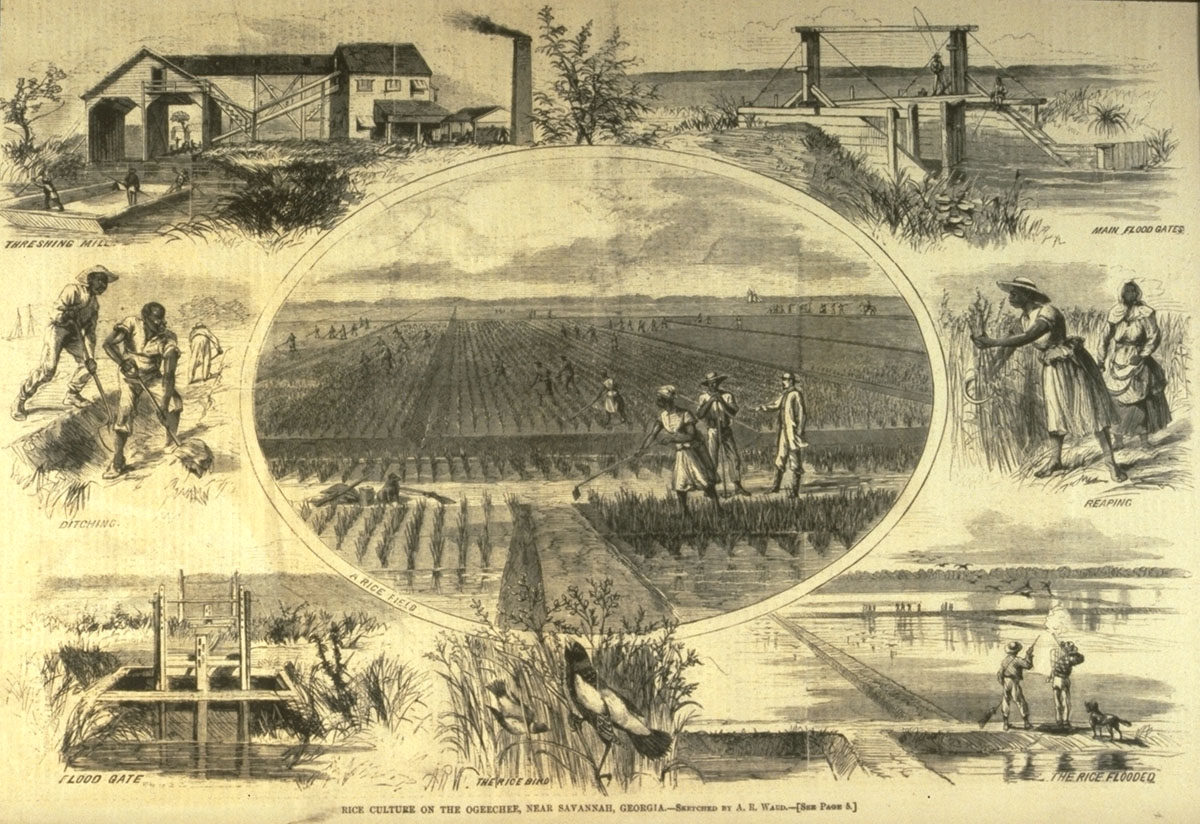Many forces have conspired to obscure from modern vision the doubly tragic role once played by rice on the American stage...On the Waccamaw peninsula - now almost wholly occupied by the comfortable dwellings of retired white people, and by thousands of pleasure seekers at the shimmering Atlantic beaches - how many will recall that in 1860, of the 4,595 inhabitants of the peninsula, blacks outnumbered whites by almost twenty-one to one? Among 4,383 African Americans were scattered 212 white people; and every one of the black people was an enslaved rice worker.
William Dusinberre, Them Dark Days

Beginning in the early eighteenth century, planters in South Carolina began to cultivate rice using river water that rises and falls with the tides, a process called tidal production.
Rice trunks like the one pictured below, from an 1867 issue of Harper's Weekly, were raised and lowered to control the flow of water.

The fresh water inundated the rice fields at high tide and drained them at low tide, days or weeks later, killing weeds, protecting the seed from birds and the sun, and watering the rice plants.
For enslaved laborers on these Lowcountry rice plantations, the work was difficult and dangerous, involving exposure to disease, extreme heat and cold, and often working waist-deep in mud.

Before the tidal production of rice could begin, dense swampland had to be cleared to create the irrigation systems, an unbelievably demanding process.
Using hand tools, enslaved laborers cut down and uprooted huge, ancient trees. Slowly but surely, and at the cost of countless lives, they carved out rice fields from the cypress swamps.
Although this photograph was taken in 1916, it illustrates the terrible conditions suffered by workers in the rice swamps where, even after they were cleared, the ditches and embankments had to be constantly maintained.

The standing water in the fields made the conditions on rice plantations so unhealthy, and the fear of malaria so great, that the white owners spent most of their time elsewhere, leaving much of the day-to-day operations to overseers. As a result, enslaved workers were isolated from the planters and their families.
This sketch portrays an idealized view of rice cultivation.

Unlike cotton plantations, where gangs of enslaved laborers worked together on one aspect of cultivation at a time, rice growing was organized around tasks, with a team of bondsmen working the same plot day-to-day.

This drawing from an 1867 issue of Harper’s Weekly is another romanticized depiction of the tasks involved in rice cultivation on a Georgia plantation. While still terribly difficult, the task system did provide enslaved people a degree of autonomy.
